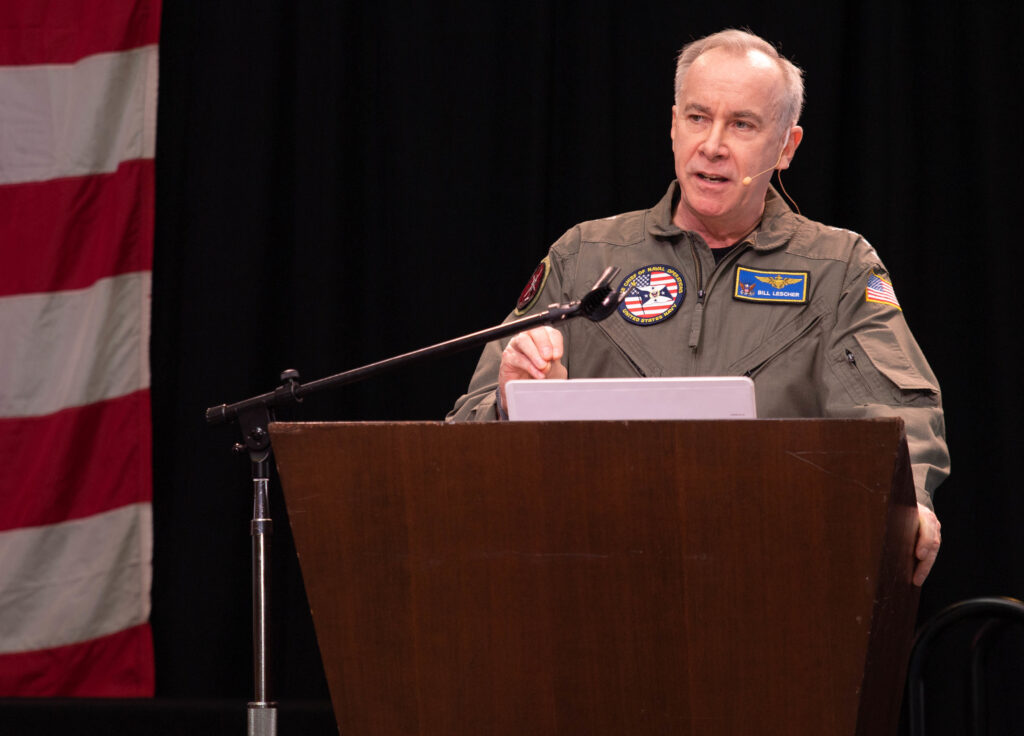
ARLINGTON, Va. — Retention of Sailors in the fleet is going well but the demographics trend for recruiting is getting tougher, said the vice chief of naval operations, who also explained the efforts to reduce the shortage of Sailors on the Navy’s surface ships.
“We’re very focused on retention, and it’s strong right now,” said VCNO, Adm. William K. Lescher, testifying March 3 before a joint hearing of the Seapower and Projection Forces subcommittee and Readiness subcommittee of the House Armed Services Committee. “It’s at a very strong level.
“Part of the reason we’re focusing on it is because recruiting is becoming increasingly difficult for all the services and even more broadly,” Lescher said. “The last data I [saw] showed that that portion of the U.S. population that’s eligible to serve, their propensity to serve from 2018 was 13% and to 2021 is now 10%. All of the service recruiters are seeing symptoms of the ‘great resignation’ and/or a labor market that is so tough that at our new-construction shipyards, our repair shipyards, our aviation depots, all are struggling to bring in — we’re all competing for — the same talented group. So, we’re laser-focused on that.”
During the hearing, Rep. Sara Jacobs (D-California) cited a Government Accountability Office report that found the surface fleet is 15% undermanned compared with required levels, since under-manning was part of the reason for the 2017 collisions involving the destroyers USS Fitzgerald and USS John McCain.
In response, Lescher pointed out the Navy has increased its end-strength by 23,000 personnel since those incidents and is “getting very much after it [the under-manning]. Part of the reason that it remains under-manned is because we have been adding billets as well. … As we add billets to address the overwork issue and make sure the crew is sized for everything that is expected of it, we’re then chasing that with our accessions. So, we’re closing the gaps across the Navy.”
The VCNO said “the other element is strong certification and focus on the manning that we deploy our ships with. The remaining work we have to get after with a strong sense of urgency is across the full OFRP [Optimized Fleet Readiness Plan] cycle as well.”
Also testifying was Vice Adm. Roy Kitchener, commander, Naval Surface Forces, who spoke on the use of data for the last year in a program involving tracking expertise and proficiency in six shipboard rates, or Sailor job specialties, in engineering and combat systems.
“We track each individual and what their proficiency and experience are, and then we are able to put them where we think we need them,” Kitchener said. “For example, if a ship is down in a number of years of experience in an engineering work center or an Aegis fire control system, we can actually make sure we send the right person there that increases the proficiency. It’s a much better measure of fit. … Right now, it’s part of the manning process. We’re using it extensively to fill those gaps at sea … making sure that we have the right people to go there.”
Kitchener said the results to date are “very encouraging” and “it’s a metric that we’re going to continue to go after to allow us to make sure we have that manning right on the ship.”
- Insitu Going Strong at 30, Focusing on Maritime Operations - April 8, 2024
- Navy Awards Boeing Additional Funds for MQ-25 Drones for Testing - April 3, 2024
- Benign 4th Fleet AOR Useful for Unmanned Vehicle Operationalization, Admiral Says - March 27, 2024






